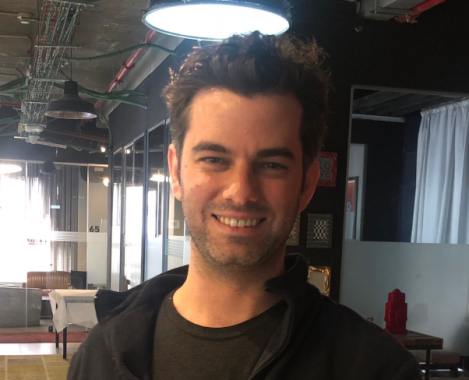
Dan Weitzner is co-founder and Vice President of Research and Development of WPSemantix. He obtained his Bachelor of Science in Computer Science from Florida Atlantic University. In collaboration with DBpedia he and his colleagues at WPSemantix launched timbr-DBpedia, the first SQL Semantic Knowledge Graph that integrates Wikipedia and Wikidata Knowledge into SQL engines.Dan Weitzner is co-founder and Vice President of Research and Development of WPSemantix. He obtained his Bachelor of Science in Computer Science from Florida Atlantic University. In collaboration with DBpedia he and his colleagues at WPSemantix launched timbr, the first SQL Semantic Knowledge Graph that integrates Wikipedia and Wikidata Knowledge into SQL engines.
Can you tell us something about your research focus?
WPSemantix bridges the worlds of standard databases and the Semantic Web by creating ontologies accessible in standard SQL.
Our platform – timbr- is a virtual knowledge graph that maps existing data-sources to abstract concepts, accessible directly in all the popular Business Intelligence (BI) tools and also natively integrated in Apache Spark, R, Python, Java and Scala. timbr enables reasoning and inference for complex analytics without the need for costly Extract-Transform-Load (ETL) processes to graph databases.
How do you personally contribute to the advancement of semantic technologies?
We believe we have lowered the fundamental barriers to adoption of semantic technologies for large organizations who want to benefit from knowledge graph capabilities without requiring fundamental changes in their database infrastructure and without requiring expensive organizational changes or significant personnel retraining.
We implemented the W3C Semantic Web principles to enable inference and inheritance between concepts in SQL, and to allow seamless integration of existing ontologies from OWL. Subsequently, users across organizations can do complex analytics using the same tools that they currently use to access and query their databases, and in addition, to facilitate sophisticated query of big data without requiring highly technical expertise.
timbr-DBpedia is one example of what can be achieved with our technology. This joint effort with the DBpedia Association allows semantic SQL query of the DBpedia knowledge graph, and the sematic integration of the DBpedia knowledge into data warehouses and data lakes. timbr-DBpedia allows organizations to benefit from enriching their data with DBpedia knowledge, combining it with machine learning and/or accessing it directly from their favorite BI tools.
Which trends and challenges do you see for linked data and the semantic web?
Use of semantic technologies for data exploration and data integration is a significant trend followed by data-driven communities. It allows companies to leverage the relationship-rich data to find meaningful insights in their data. One of the big difficulties for the average developer and business intelligence analyst is the challenge to learn semantic technologies. Another one is to create ontologies that are flexible and easily maintained. We aim to solve both challenges with timbr.
Which application areas for semantic technologies do you perceive as most promising?
I think semantic technologies will bloom in applications that require data integration and contextualization for machine learning models. Ontology-based integration seems very promising by enabling accurate interpretation of data from multiple sources through the explicit definition of terms and relationships - particularly in big data systems, where ontologies could bring consistency, expressivity and abstraction capabilities to the massive volumes of data.
As artificial intelligence becomes more and more important, what is your vision of AI?
I envision knowledge-based business intelligence and contextualized machine learning models. This will be the bedrock of cognitive computing as any analysis will be semantically enriched with human knowledge and statistical models. This will bring analysts and data scientists to the next level of AI.
What are your expectations about Semantics 2019 in Karlsruhe?
I want to share our vision with the semantic community and I would also like to learn about the challenges, vision and expectations of companies and organizations dealing with semantic technologies.
Is there anything you want to add?
Thank you very much for this opportunity, I feel humbled and honored to be given this platform to share our ideas and learn from the community.
About SEMANTiCS
The annual SEMANTiCS conference is the meeting place for professionals who make semantic computing work, and understand its benefits and know its limitations. Every year, SEMANTiCS attracts information managers, IT-architects, software engineers, and researchers, from organisations ranging from NPOs, universities, public administrations to the largest companies in the world. http://www.semantics.cc